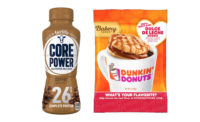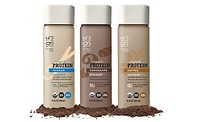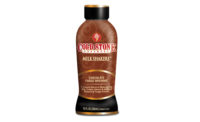2018 State of the Beverage Industry: Dairy alternatives drive success for category
Consumer demand for clean-label products impact dairy segment

The clean-label and health-and-wellness beverage trend is more prevalent than ever before. Although experts are seeing an overall decline in the dairy market, dairy alternatives are permeating the segment and realizing growth. They note that plant-based alternatives will continue to drive the category.
A September 2017 report from Chicago-based Mintel titled, “Non-dairy Milk – US – September 2017,” states that non-dairy milk has seen growth in 2017 and is expected to continue this trend through 2022. Largely influenced by almond milk, innovative plant bases are adding variety in flavor and nutritional value to the category, both drivers of non-dairy milk, it continues.
Chicago-based Information Resources Inc. (IRI) reported that the overall milk category saw $15 billion in dollar sales for the last 52 weeks ending May 20 in total U.S. multi-outlets and convenience stores, a 3 percent decrease from last year.
“The milk category as a whole declined 2.6 percent in the 52 weeks ending August 2017,” said Jordan Rost, vice president of consumer insights at New York-based Nielsen, in Beverage Industry’s November 2017 issue. “However, in looking across varieties, we see that specialty milks (including lactose-free varieties) and milk substitutes are the only sub-categories driving growth, with dollar sales up.
The entire dairy department continues to face deflationary pressures, meaning that with falling prices, the competition for consumers’ dollars is more important than ever,” he said.
“Although the traditional dairy category is experiencing declines, plant-based dairy alternatives is a category that will steadily grow,,” Rost continued. “Consumers’ shifting diet habits and healthy preferences have played a significant role in the growth of the plant-based dairy alternatives segment and almond and coconut milks, in particular.” continued.
(Individual brands)
| Dollar Sales | % CHANGE VS. PRIOR YEAR | MARKET SHARE | % CHANGE VS. PRIOR YEAR | |
| Blue Diamond | $447,927,185 | 13.6 | 40 | 1.4 |
| Silk | $405,993,049 | 4.7 | 36.6 | -1.7 |
| Private label | $186,837,804 | 18.1 | 16.7 | 1.2 |
| Califia Farms | $70,144,717 | -0.7 | 6.3 | -0.7 |
| Hiland | $4,466,675 | 1.5 | 0.4 | -0.3 |
| Category total* | $1,119,508,984 | 9.7 | 100.0 | — |
Source: Information Resources Inc. (IRI), Chicago. Total U.S. supermarkets, drug stores, gas and convenience stores, mass merchandisers, military commissaries, and select club and dollar retail chains for the 52 weeks ending May 20.
In line with Nielsen’s findings, IRI data documents an overall increase in almond milk sales. The market research firm reported that the $1 billion almond milk segment saw a 9.7 percent increase in the last 52 weeks.
With that, almond milk leads the category in growth: coconut milk was not far behind, with an increase in growth of 5.7 percent in multi-outlets for the 52 weeks ending May 20. Refrigerated soy milks and kefir both saw a decrease in sales of 10.2 percent and 14.1 percent, respectively. Soy milks are roughly $2.1 million of the total dairy alternative category and kefirs make up $1 million, IRI data suggests.
(Individual brands)
| Dollar Sales | % CHANGE VS. PRIOR YEAR | MARKET SHARE | % CHANGE VS. PRIOR YEAR | |
| Silk | $166,328,819 | -9 | 78.5 | 1.1 |
| Private label | $37,144,058 | -9.9 | 17.5 | 0.1 |
| 8th Continent | $7,073,404 | -32.4 | 3.3 | -1.1 |
| All Booth Brothers | $753,953 | -10.5 | 0.4 | 0 |
| Hiland | $241,689 | -28.7 | 0.1 | -0.3 |
| Category total* | $212,012,166 | -10.2 | 100.0 | — |
Source: Information Resources Inc. (IRI), Chicago. Total U.S. supermarkets, drug stores, gas and convenience stores, mass merchandisers, military commissaries, and select club and dollar retail chains for the 52 weeks ending May 20.
Consumer demand for clean-label products has played a significant role in the growth of these types of dairy alternatives, said Andrew Mandzy, Nielsen’s former director of strategic health and wellness, in Beverage Industry’s November 2017 issue. “…We are seeing a shift to plant-based foods as a more important part of consumer diets. The share of foods and beverages that meet a plant-based diet is growing, and the dairy beverage category is a beneficiary of that broader consumer trend.
“Thirty-nine percent of consumers stated that they are looking to increase their consumption of plant-based products as they focus on eating and drinking cleaner foods and beverages and see healthier options across the store,” he continued.
(Individual brands)
| Dollar Sales | % CHANGE VS. PRIOR YEAR | MARKET SHARE | % CHANGE VS. PRIOR YEAR | |
| Lifeway | $80,522,888 | -14 | 79.3 | 0.1 |
| The Greek Gods | $4,459,706 | -29.1 | 4.4 | -0.9 |
| Private label | $4,187,276 | -23 | 4.1 | -0.5 |
| Wallaby Organic | $2,790,472 | 53.5 | 2.7 | 1.2 |
| Fresh Made | $2,670,263 | -1.5 | 2.6 | 0.3 |
| Category total* | $101,511,252 | -14.1 | 100.0 | — |
Source: Information Resources Inc. (IRI), Chicago. Total U.S. supermarkets, drug stores, gas and convenience stores, mass merchandisers, military commissaries, and select club and dollar retail chains for the 52 weeks ending May 20.
Going forward, experts say that the market will be driven by further innovation within plant-based alternatives. Mandzy predicts that clean-label trends will continue to influence both the dairy and dairy-alternatives markets.
“We think that the trend toward cleaner foods and beverages will continue,” he explained. “ Retailers across all channels are focused on product transparency as consumers look for the brands that meet their needs. The shift will continue to impact the dairy beverage category as well, as consumers look for plant-based and clean products.
“This is a fascinating time to see health, wellness and product transparency impact consumer decision-making across the entire store,” he added.
Industry experts note that there is a high percentage of non-dairy milk drinkers that also drink dairy milk. Nielsen’s Rost explained that dairy beverage manufacturers will need to identify innovative and creative ways to capture consumers’ attention and demonstrate the value in their brands. Commitments to transparent labeling can have strong impacts on brand equity, which will help the category stay relevant, he says. BI
Looking for a reprint of this article?
From high-res PDFs to custom plaques, order your copy today!






